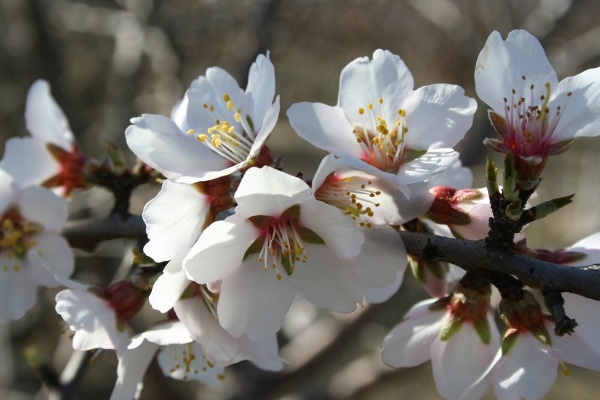
Dryland grains showed good growth and steady development although more precipitation was still needed;Field preparations for spring cotton planting continued with bed formation, pre-irrigation, and weed control;Grape and kiwi vineyards were pruned and sprayed;Almond bloom picked up across California. Due to the lack of precipitation, many orchards have been irrigated at least once.
February 24, 2012

The California Crop Weather report from the National Agricultural Statistics Service’s Filed Office in Sacramento, Calif., released Feb. 21, 2012.
Weather
The weather for the week of Feb. 13 was affected by a series of rather weak cold fronts which passed over the persistent high pressure ridge in place just off the West Coast. The strongest of the storm systems brought widespread showers to the entire state, spreading from the North Coast early Monday, and sweeping south and east across California.
Light to moderate rains were associated with this system with moderate snowfall across the northern mountains and the Sierra Nevada. At least two other weak frontal systems passed across California as the week progressed.
In between systems, gusty offshore flow brought drying conditions to Southern California. The last of the cold fronts moved through during the weekend. These storms brought light amounts of precipitation to the Golden State. Seasonal precipitation still remains far below seasonal normal.
Field crops
Dryland grains showed good growth and steady development although more precipitation was still needed. Some replanting of wheat fields was required while poor fields were destroyed so other crops may be planted pending forecasted rain. Some small grain fields were irrigated. Irrigated fields showed outstanding development.
Weed control in hay, wheat, rye, and oat fields continued. Ground preparation and fertilization also continued.
Rice fields were drained. Alfalfa fields showed decent growth as a result of recent rainfall.
Field preparations for spring cotton planting continued with bed formation, pre-irrigation, and weed control. Fields were prepared for corn planting.
Fruit crops
Pruning of orchards was nearly complete; herbicide spraying continued. Lack of rainfall and mountain snowpack remained a concern for growers.
Early plums and apricots were blooming. Grape and kiwi vineyards were pruned and sprayed. Kiwifruit, persimmons, and Asian pears were exported. Olives were dormant.
The Navel orange and tangerine harvests continued. Frost damage was limited. The export of pummelos, grapefruit, Cara Caras, and lemons was ongoing.
Nut crops
A few growers were still irrigating, planting, and pruning in walnut and pistachio orchards. Walnuts and pistachios were exported.
Almond orchard work was complete. Almond bloom began to pick up across the state. Some operations applied bloom sprays. Due to the lack of precipitation, many orchards have been irrigated at least once.
Vegetable crops
Kern County reported carrot planting.
Fresno County reported poor conditions hindered harvest.
In Stanislaus County, broccoli was harvested. Asparagus and spinach grew very well.
About the Author(s)
You May Also Like





